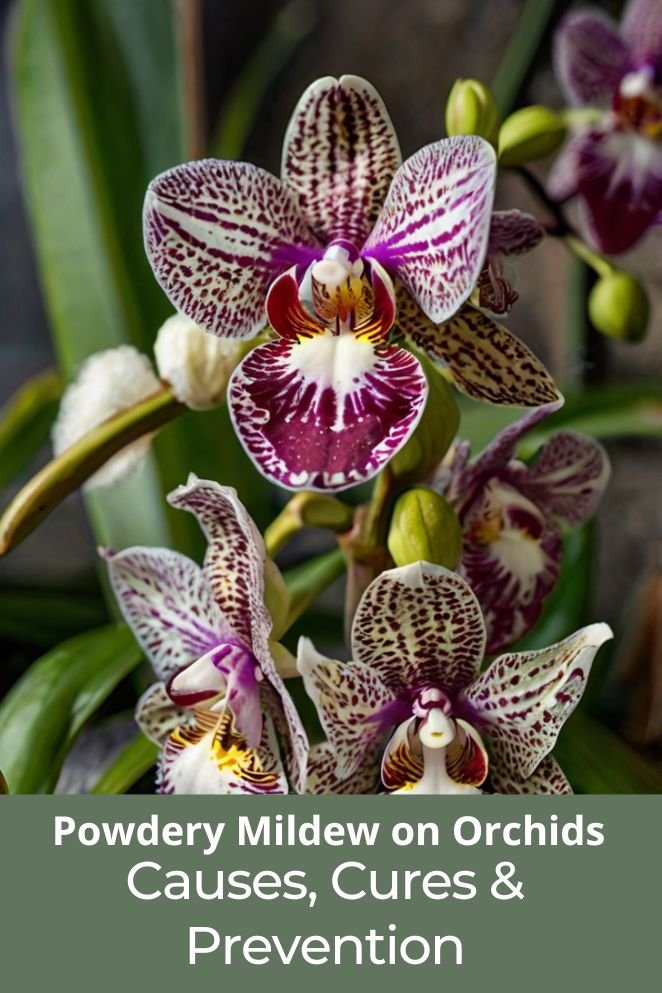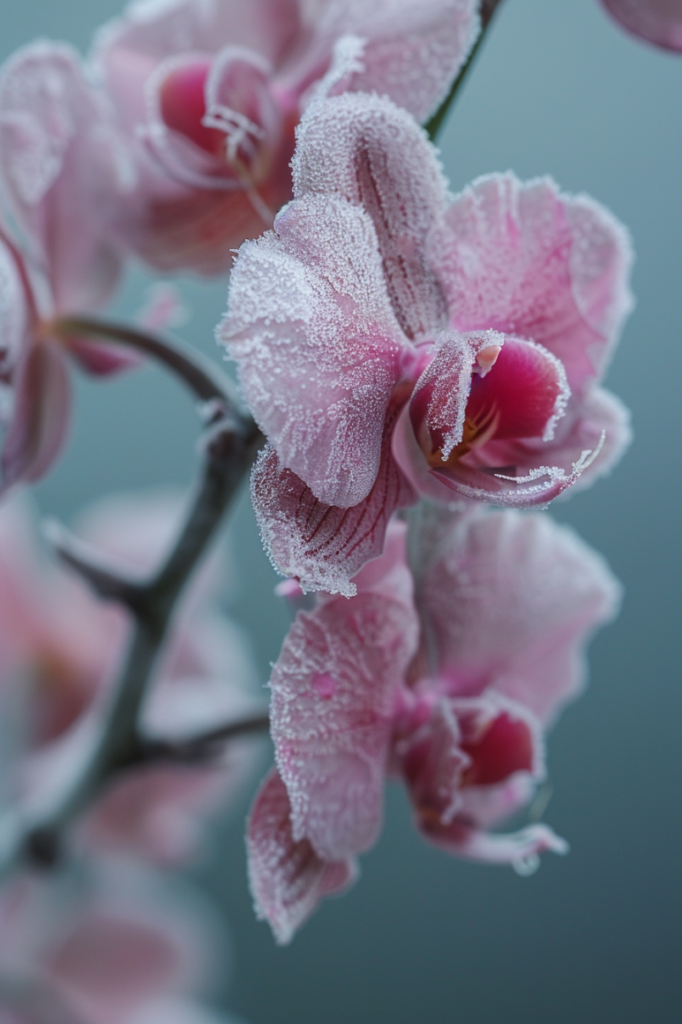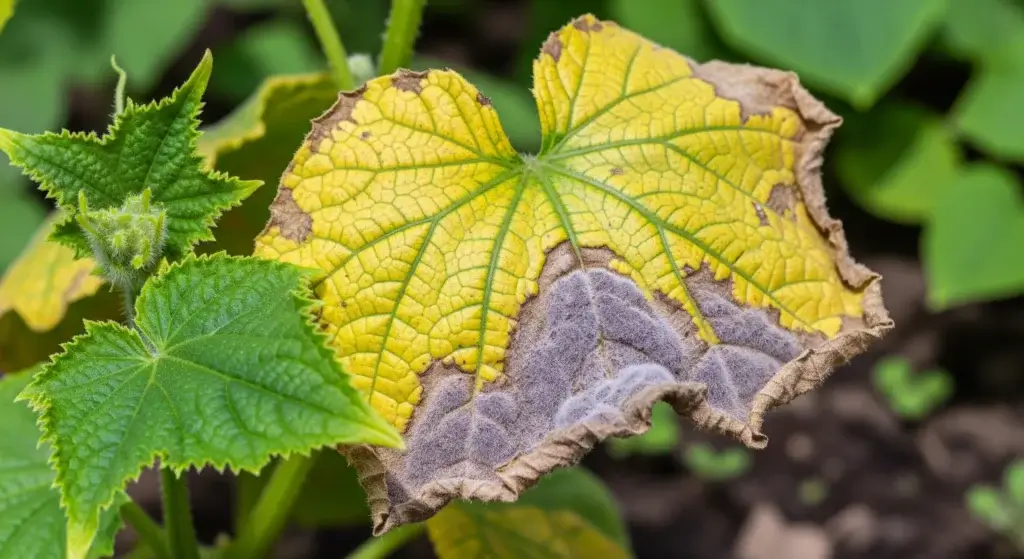
Orchids are stunning and elegant plants that can add a touch of beauty to any home or garden.
However, like all plants, they are susceptible to various diseases, one of the most common being powdery mildew.
It appears as a white, powdery substance on the leaves, stems, and sometimes the flowers of the plant.
While it is not usually fatal, powdery mildew can weaken the plant, affect its appearance, and reduce its overall health.
Understanding how to identify, treat, and prevent powdery mildew is crucial for keeping your orchids vibrant and healthy.
Signs
Identifying powdery mildew on orchids is relatively straightforward once you know what to look for.
Here are the common signs, explained in detail:
White powdery spots
The most noticeable sign of powdery mildew is the presence of white or grayish powdery spots on the leaves and stems.
These spots look like someone has dusted the plant with flour.
Initially, the spots may be small, but they can quickly spread and cover larger areas of the plant if not treated promptly.
This powdery coating is actually a mass of fungal spores that can easily spread to other plants.
- Read also: Effective Solutions: Tips Against Powdery Mildew on Roses
- Read also: Powdery Mildew on Succulents: A Guide to Saving Your Succulents
Yellowing leaves
As the mildew spreads, it affects the health of the leaves, causing them to yellow.
This yellowing is a sign that the leaf is under stress and not functioning properly.
Yellowing leaves may also start to wilt or become distorted in shape.
This is because the mildew interferes with the plant’s ability to photosynthesize effectively, reducing its energy production.
Stunted growth
Affected orchids may show signs of stunted growth.
This is because the mildew affects the plant’s ability to absorb nutrients and perform photosynthesis, both of which are crucial for healthy growth.
You might notice that new leaves and shoots are smaller than usual or that the plant seems to be growing more slowly than it should.
This stunted growth is a clear indicator that the plant is struggling due to the infection.
Premature leaf drop
Leaves infected with powdery mildew may fall off prematurely.
This is because the fungus damages the leaf tissues, causing them to weaken and eventually detach from the plant.
When an orchid loses its leaves prematurely, it reduces the plant’s overall health and vigor.
A plant with fewer leaves has a reduced capacity for photosynthesis, which can lead to further health decline.

Causes
The primary culprit behind powdery mildew on orchids is a fungus.
However, there are certain conditions that favor the growth of this fungus, making your orchid more susceptible.
Here’s a breakdown of the causes:
High humidity
Orchids thrive in humid environments because they naturally grow in tropical regions where humidity levels are high.
Humidity helps orchids maintain their hydration and supports healthy growth.
However, when humidity levels become too high, it creates the perfect conditions for powdery mildew to develop.
High humidity allows the fungal spores to germinate and spread more quickly.
It’s important to maintain a balance, keeping the humidity at an optimal level for the orchids without encouraging fungal growth.
Poor air circulation
Orchids need good air circulation to stay healthy.
When air around the orchids is stagnant, it can trap moisture on the leaves and stems, creating a damp environment where fungal spores can thrive.
Poor air circulation also means that fungal spores, once present, can easily spread from one plant to another.
This makes it crucial to ensure your orchids are in a location with good airflow, which can be achieved by spacing plants properly and possibly using fans to keep the air moving.
Overwatering
While orchids do need regular watering, overwatering can lead to an overly wet environment.
Orchids typically grow in well-draining media that allow excess water to escape, mimicking their natural habitat.
When orchids are overwatered, the growing medium can become waterlogged, creating a consistently damp environment that promotes the growth of powdery mildew.
Ensuring the right balance of moisture without overwatering is key to preventing mildew.
Weakened plants
Orchids that are stressed due to lack of sunlight, nutrient deficiencies, or other problems are more susceptible to fungal diseases like powdery mildew.
Insufficient light and deficiencies in nutrients can weaken orchids, making them more susceptible to diseases like powdery mildew.
A weakened plant cannot effectively fend off fungal infections.

Treatment
Early intervention is key.
If you notice signs of powdery mildew early on, prompt treatment will increase your chances of successfully eliminating the fungus and saving your orchid.
There are two main approaches to tackling powdery mildew on your orchid: fungicides and natural remedies.
Here’s a breakdown of both options:
Fungicides
Fungicides are generally the most effective way to control powdery mildew, especially for severe infestations.
Look for fungicides containing copper, neem oil, or sulfur as active ingredients.
These have proven effective against powdery mildew.
Always follow the manufacturer’s instructions for application rates and frequency.
You’ll likely need to repeat treatments at regular intervals to completely eradicate the fungus.
Fungicides can be harsh on orchids, so be sure to dilute them properly and avoid spraying on flowers.
Natural remedies
Natural remedies are a good option if you prefer a more organic approach or for mild cases of powdery mildew.
Here are a few popular choices:
- Baking soda solution: Mix 1 teaspoon of baking soda with 1 quart of water and a few drops of dish soap. Spray the orchid thoroughly, making sure to reach undersides of leaves.
- Milk solution: One part milk mixed with three parts water can be used as a spray.
- Cinnamon: Sprinkle some ground cinnamon on areas where you see powdery mildew growth.
Before starting treatment, consider taking some preliminary steps to prepare:
- Isolate the infected plant: To prevent the mildew from spreading to other plants, isolate the affected orchid immediately.
- Prune infected areas: Carefully remove and dispose of any infected leaves or stems. Use sterilized pruning tools to avoid spreading the fungus.
- Improve growing conditions: Along with treatment, address the underlying causes of powdery mildew. Ensure good air circulation, adjust watering practices to avoid overwatering, and maintain moderate humidity levels.

Prevention
Preventing powdery mildew is always better than treating it.
By taking some simple preventive measures, you can keep your orchids healthy and free from this common fungal disease.
Here are some detailed steps you can follow:
Keep moderate humidity
While orchids appreciate some humidity, keep it in the moderate range (around 50-70%).
Avoid placing your orchid in terrariums or overly humid environments.
Use a hygrometer to monitor the humidity levels. If the humidity is too high, consider using a dehumidifier or increasing ventilation to bring it down to the optimal range.
Maintain good air circulation
Orchids enjoy good air movement around their leaves.
Avoid overcrowding plants and ensure proper ventilation, especially important during humid weather.
You can use a small fan on low setting to create gentle air flow.
Avoid overwatering
Allow the orchid’s roots to dry slightly between waterings.
This promotes good air circulation around the roots and prevents the stagnant, moist environment that powdery mildew favors.
When watering, focus on soaking the roots thoroughly and then letting excess water drain away.
Strengthen the plant
To keep your orchid healthy and resilient against diseases, ensure it receives the right nutrients through balanced orchid fertilizer and timely repotting.
Place it where it can get bright, indirect sunlight, which supports its health and encourages proper air circulation around its leaves.
Regularly maintain cleanliness by removing dead leaves, flowers, and debris around the plant to prevent fungal issues and enhance airflow.

- Read also: Conquer the Curse: Strategies for Powdery Mildew on Pumpkins
- Read also: Powdery Mildew on Cucumber Plants: Solutions and Prevention
Conclusion
Powdery mildew can be a troublesome issue for orchid enthusiasts, but with proper care and attention, it can be managed and even prevented.
By recognizing the signs early, understanding the causes, and implementing effective treatment and prevention strategies, you can keep your orchids healthy and beautiful.
Regular monitoring and good horticultural practices are key to ensuring your orchids thrive.
FAQs
While powdery mildew is not usually fatal, it can weaken your orchid and make it more susceptible to other diseases.
Regularly inspect your orchids at least once a week to catch any early signs of mildew or other issues.
Yes, but always choose a fungicide that is labeled safe for orchids and follow the instructions carefully.
Yes, homemade solutions like a baking soda spray can be effective. However, always test on a small area first to ensure it doesn’t harm your plant.



